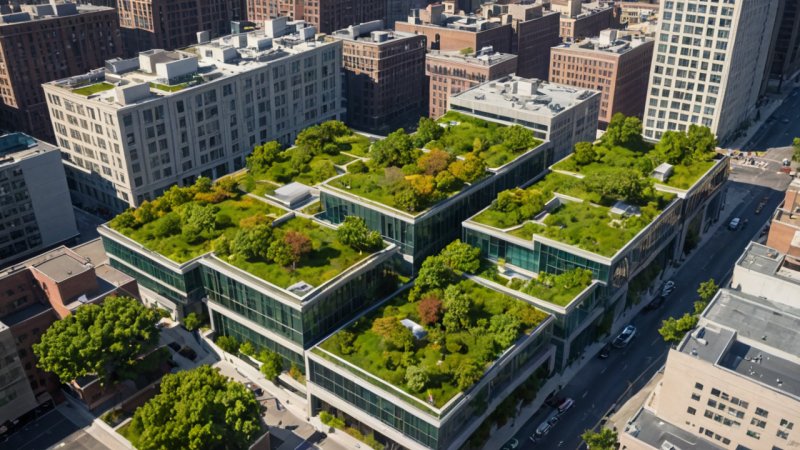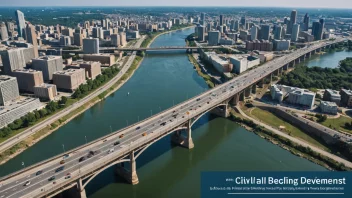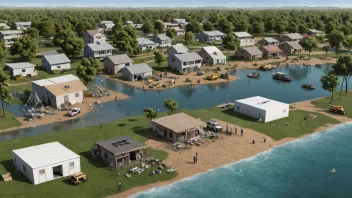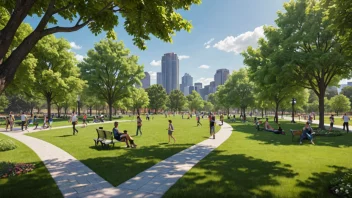Urban heat islands (UHIs) are a significant environmental challenge faced by cities worldwide. This phenomenon occurs when urban areas experience higher temperatures than their rural surroundings due to human activities and infrastructure. As cities continue to grow, the effects of UHIs become more pronounced, leading to increased energy consumption, elevated emissions of air pollutants, and adverse health effects. This article delves into how engineering is addressing the challenges posed by urban heat islands, exploring innovative strategies and technologies that are being implemented to mitigate their impacts.
Understanding Urban Heat Islands
Urban heat islands are primarily caused by the modification of land surfaces and the presence of heat-absorbing materials such as asphalt and concrete. These materials absorb and retain heat during the day, releasing it slowly at night, which results in elevated nighttime temperatures. Additionally, urban areas tend to have fewer trees and vegetation compared to rural areas, leading to reduced cooling effects through shade and evapotranspiration.
Factors Contributing to Urban Heat Islands
Several factors contribute to the development of UHIs:
- Land Cover: The prevalence of impervious surfaces such as roads and buildings increases heat absorption.
- Building Density: High-density developments restrict airflow and trap heat.
- Human Activities: Industrial processes, transportation, and energy use generate excess heat.
- Lack of Vegetation: Green spaces are crucial for cooling, and their absence exacerbates heat retention.
The Impact of Urban Heat Islands
The consequences of urban heat islands are far-reaching, affecting not only the environment but also public health and economic productivity. Some of the notable impacts include:
1. Increased Energy Consumption
Higher temperatures lead to increased demand for air conditioning and cooling systems, resulting in higher energy consumption and elevated electricity costs.
2. Air Quality Deterioration
UHIs can exacerbate air pollution, as increased temperatures contribute to the formation of ground-level ozone, which poses health risks to vulnerable populations.
3. Health Risks
Prolonged exposure to elevated temperatures can lead to heat-related illnesses, particularly among the elderly, children, and those with pre-existing health conditions.
4. Economic Impacts
Increased energy costs and health-related expenses can strain local economies, while decreased productivity due to heat stress can affect workforce efficiency.
Engineering Solutions to Mitigate Urban Heat Islands
To combat the challenges posed by urban heat islands, engineers and urban planners are implementing a variety of innovative solutions. These strategies aim to reduce heat absorption, enhance cooling, and improve the overall livability of urban environments.
1. Green Infrastructure
Green infrastructure refers to the integration of natural systems into urban environments to manage stormwater, improve air quality, and reduce heat. Key components include:
- Green Roofs: These are vegetated roofs that provide insulation, reduce heat absorption, and promote biodiversity.
- Urban Forestry: Planting trees and creating green spaces can significantly lower surface and air temperatures.
- Permeable Pavements: These materials allow water to infiltrate, reducing heat retention and improving stormwater management.
2. Cool Roofs and Cool Pavements
Cool roofs are designed to reflect more sunlight and absorb less heat than standard roofs, helping to lower indoor temperatures and reduce energy consumption. Similarly, cool pavements are engineered to reflect sunlight and remain cooler than conventional surfaces. Both strategies contribute to a reduction in the urban heat island effect.
3. Urban Design and Planning
Thoughtful urban design can help mitigate UHIs by promoting airflow and reducing heat retention. Strategies include:
- Building Orientation: Positioning buildings to maximize natural ventilation can improve airflow and reduce heat accumulation.
- Mixed-Use Development: Integrating residential, commercial, and recreational spaces can reduce the need for transportation and promote walkability.
- Open Spaces: Designing parks and recreational areas can provide cooling effects and enhance urban biodiversity.
4. Innovative Materials
Engineers are developing new materials that can help reduce heat absorption. For example, reflective coatings and high-albedo materials can be used in roofing and paving to minimize heat retention.
Case Studies of Successful UHI Mitigation
Several cities around the world have successfully implemented engineering solutions to combat urban heat islands. Here are a few notable examples:
1. New York City, USA
New York City has launched the “CoolRoofs” initiative, which encourages the installation of reflective roofing materials across the city. This program has led to the coating of over 10 million square feet of rooftops, resulting in significant energy savings and reduced temperatures.
2. Singapore
Singapore is renowned for its extensive urban greenery, with initiatives such as the “Garden City” concept that integrates parks, green roofs, and vertical gardens into urban planning. These efforts have effectively reduced urban temperatures and enhanced residents' quality of life.
3. Melbourne, Australia
Melbourne has implemented a “Urban Heat Island Study” that identifies areas most affected by UHI and promotes the planting of trees and the installation of green roofs in those regions. The city aims to increase its tree canopy cover to 40% by 2040.
Challenges and Future Directions
While significant progress has been made in addressing urban heat islands, challenges remain. Funding for green infrastructure projects can be limited, and there may be resistance to changing established urban planning practices. Additionally, climate change continues to exacerbate the effects of UHIs, necessitating ongoing research and innovation.
Future efforts should focus on:
- Community Engagement: Involving local communities in urban planning can lead to more effective and accepted solutions.
- Policy Development: Implementing supportive policies and regulations can incentivize the adoption of UHI mitigation strategies.
- Research and Innovation: Continued research into new materials and technologies is essential for developing effective solutions.
Conclusion
Urban heat islands present a significant challenge to urban environments, impacting energy consumption, air quality, and public health. However, engineering solutions such as green infrastructure, cool roofs, and innovative materials are providing effective strategies to mitigate these effects. By embracing these solutions and fostering collaboration between engineers, urban planners, and communities, cities can create healthier, more sustainable environments that enhance the quality of life for all residents. As we move forward, it is crucial to continue investing in research and innovation to address the evolving challenges posed by urban heat islands.






